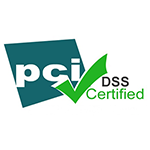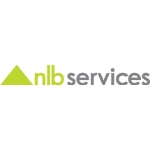© 2025 Next Level Business Services Inc. All Rights Reserved.
How to hire and manage remote employees
By NLB Services
The remote work revolution has opened up new possibilities for businesses to tap into a global talent pool. By hiring remote employees, companies can access skilled professionals without being limited by geographic boundaries. However, hiring and managing a remote workforce comes with its own set of challenges. In this blog post, we’ll explore how to hire and effectively manage remote employees and how you can excel in working with remote employees.
How to hire remote employees
Hiring exceptional remote workers involves a well-thought-out process. This includes having a swift and seamless application process, utilizing online recruitment tools like video interviews or remote projects to assess the candidate’s fit within your company culture, and ensuring a thorough evaluation before extending a job offer.
Hiring remote workers requires a different approach than traditional in-office hiring. Begin with clearly defining the role and responsibilities, as well as the skills and qualifications required to fulfill the role.
Adapting to certain remote hiring strategies can help you handle the work from the home team better while ensuring their productivity is at par with expectations. Online job boards, social media, and using your professional network are great ways to advertise open remote positions. During the interview process, assess candidates’ self-motivation, time-management abilities, and communication skills – qualities essential for successful remote work. Consider conducting video interviews to get a better sense of the candidate’s personality and communication style.
Setting Clear Expectations
Setting clear expectations is crucial when managing remote employees. Establish guidelines for work hours, availability, and response times. Clearly define goals, deadlines, and performance metrics. Encourage open communication and provide regular feedback to ensure everyone is on the same page. Create a detailed work-from-home policy that outlines expectations for productivity, communication, and adherence to company policies.
Remember, remote employees may face unique challenges, such as balancing work and personal life in a home environment, understanding their challenges, and offering flexible work arrangements when possible can help them work better.
Effective Communication Strategies
Effective communication is the backbone of successful remote team management. Establish regular check-ins, whether through video calls, instant messaging, or project management tools. Encourage open dialogue and create opportunities for remote employees to connect with their colleagues, such as virtual team-building activities or online social events. Provide clear and concise written communication, as remote employees may not have the benefit of non-verbal cues. Foster an environment of transparency by sharing important updates, decisions, and company news regularly.
Building Trust and Rapport
Building trust and rapport with remote employees is essential for fostering a positive and productive work environment. You can schedule regular one-on-one meetings to discuss not only work-related topics but also personal interests and challenges. Encourage remote employees to share their opinions and ideas, and make them feel valued as part of the team.
Recognize and celebrate their achievements, both individually and as a team. Foster a culture of mutual respect and understanding, acknowledging the unique challenges and advantages of remote work.
Onboarding Remote Employees
Proper onboarding is crucial for setting remote employees up for success. Provide comprehensive training on company policies, procedures, and tools. Assign a mentor or buddy to help them navigate the company culture and answer any questions they may have. Create a detailed remote onboarding process checklist to ensure all necessary steps are completed, such as setting up equipment, software, and accounts.
Schedule virtual team introductions to help new remote employees feel welcomed and connected to their colleagues. Regularly check in during the onboarding process to address any concerns or issues. It is also important to walk through remote employees with all the information security guidelines for reinforced remote work security and safety of the company and employee data and crucial information. Conducting regular training remotely can help the employees stay aligned.
How to manage a remote team
Managing remote employees requires a different approach and is not easy. Here are some tips for managing remote teams that enable your employees to connect and work seamlessly and productively.
1. Schedule regular check-ins
Trust remote employees to work autonomously, but staying connected is important too. Be sure to touch base regularly on the assigned tasks, discuss deadlines, and understand if there are any hiccups faced within the team. Regular check-ins and meetings allow remote employees to stay aligned with the objective and enable you to maintain a consistent connection with them.
2. Create an easily accessible repository
There are certain documents, guides, and files that your remote employees would need access to on a regular basis. Instead of them repeatedly connecting with you to gain access to these documents, create a shared repository in one centralized location so employees always know where to look for information.
3. Focus on outcomes, not individual activities
With less visibility into remote employees’ day-to-day tasks, measuring outcomes is the best way to evaluate their productivity. Trust your team to get their work done, instead of micromanaging them. Set accountability for achieving goals while also giving them the flexibility to work as per their productive hours.
4. Help employees feel connected to your culture
It gets even harder for a remote employee to feel connected with the company’s culture as they are connected with you only through screens and not physically being present there. Organize frequent virtual, culturally engaging events so the whole team can get together beyond work and let them open up with their views, tips, and ideas so that they can get a sense of belongingness and feel valued within the team.
5. It is good to over-communicate with the remote team
Finding the right balance in communication can be challenging. It’s often better to err on the side of over-communication rather than under-communication. Regularly updating your team on project progress and broader company developments is essential. Additionally, use your weekly virtual meetings as an opportunity to catch up and ensure everyone is on the same page.
Tools for Remote Employee Management
From managing remote teams without worrying about their productivity and performance to appreciating and recognizing their efforts, getting on with the right managing tools is imperative. Utilizing these tools can significantly help you in virtual team management and enhance collaboration and employee morale:
a. Project Management Tools
Remote work software like Asana, Trello, or Jira helps teams organize tasks, set deadlines, and track progress. These online project management tools provide a centralized location for project information, allowing remote employees to stay aligned and accountable.
b. Time Tracking and Productivity Apps
Applications like RescueTime, Toggl, or Time Doctor can help remote employees monitor their time spent on tasks and identify productivity patterns. These tools can also provide insights into team productivity and identify areas for improvement.
c. Communication and Virtual Collaboration Tools
Communication tools for remote teams like Zoom, Microsoft Teams, or Google Meet facilitate virtual meetings, allowing remote teams to connect face-to-face and collaborate more effectively. Applications like Slack, Microsoft Teams, or Google Chat allow team members to communicate in real time, share updates, and collaborate on projects.
Benefits of Remote Work
Hiring a remote workforce gives you access to a worldwide talent pool as you are not limited by geography. You can tap into a broader territory to find the best talent. Hiring a remote workforce brings diversity to your team. Remote work, on the other hand, offers built-in inclusivity, allowing organizations to recruit diverse candidates from around the world. A more diverse and talented team leads to better productivity and enhances overall employee satisfaction. As per a study by HBR, 88% of employees believe working from home is a prominent benefit a job can offer.
Also Read: Creative Ideas in Retaining a Hybrid, Remote or WFH Workforce
Conclusion
Hiring and managing remote employees requires a strategic approach and the right tools and practices. By setting clear expectations, fostering effective communication, building trust and rapport, and leveraging the right technology, businesses can unlock the potential of a remote workforce and achieve long-term success. Sticking to these remote work best practices will ensure you have the best remote team on board and your organization is winning the game. If you are interested in hiring a remote workforce, connect with the experts at NLB Services and let us handle your hiring hassles.
Talent Solutions








